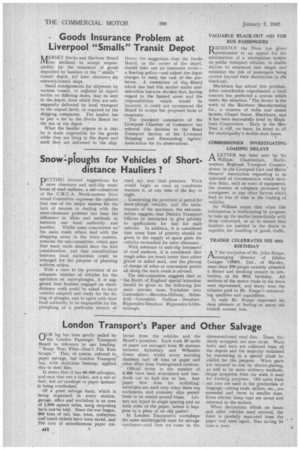London Transport's Paper and Other Salvage
Page 14

If you've noticed an error in this article please click here to report it so we can fix it.
OCR leg has been gently pulled by the London Passenger Transport Board in reference to oar heading, " Scrap Your 'Files—Don't File Your Scraps." This, of course, referred to,,, paper salvage, but London Transport has, with malicious humour, applied , this to steel files.
It states that it has 80,000 salvagers, and says that not a ticket, not a nut or bolt, not an' envelope or paper fastener is being overlooked. .
Of a great salvage hunt, which is being organized in every station, garage, office and workshop in an area of 2,000 square miles, some surprising facts can be told. Since the war began, 200 tons of rail, bus, tram, troileybus and coach tickets have been saved, and 700 • tons of miscellaneous paper col L12 lected from the vehicles and the Board's premises. Each week 20 sacks of paper are salvaged from 20 stations between Aylesbury and Willesden Green alone, whilst every morning dustmep cart off tons of paper and other litter from Underground stations.
Official forms to the number of 4,000 have been scrutinized and hundreds cut to half size or less. Any paper now does for scribbling; envelopes are used only when there are enclosures, and economy slips permit them to be reused several times. Letters are typed in single spacing and on both sides of the paper, unless it happens to a piece of an old poster!
In London Transport's workshops the same indefatigable hunt for salvage continues—and here we come to the aforementioned steel tiles. These, formerly scrapped, are now recut. Worn bolts and nuts are collected from all the depots and the majority reclaimed by rescrewing in a special plant installed for the purpose. Worn parts are restored to size by electro-plating, as well as by more ordinary methods.
• Scr.ap moquette from car seats is used for washing purposes. Old axles from • rail cars ate used in the production of forgings; cutting tools, millers, etc., are annealed and recut to smaller sizes. Even electric lamp caps are saved and returned to the makers.
When destination blinds on buses and other vehicles need renewal, the linen is carefully separated from the paper and used -again, thus saving 34 tonsa year.












































